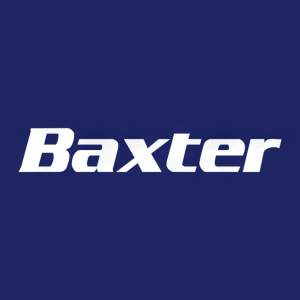Baxter Supports Analysis Demonstrating Clinical and Economic Benefits of Effective Intraoperative Blood Management for Surgical Patients
Baxter International Inc. (NYSE:BAX), a global leader in advancing surgical innovation, recognizes the findings of a large retrospective observational analysis published in the Journal of Medical Economics. The Baxter-sponsored analysis demonstrated that the use of active hemostatic products alone was associated with lower rates of bleeding-related complications, shorter hospital stays and reduced total hospital costs compared to combined use of passive and active hemostats in inpatient procedures across multiple surgical specialties.
Passive hemostatic products, such as oxidized cellulose, collagens and gelatin sponges, rely on the patient’s ability to generate clotting factors and achieve hemostasis primarily via platelet aggregation, making them most effective for patients with an adequately functioning coagulation cascade and minimal bleeding scenarios. Active hemostatic products, such as flowable hemostats containing thrombin, fibrin sealants and advanced patches, are not dependent on the patient’s ability to generate clotting factors to achieve hemostasis and are effective for a broader range of bleeding scenarios. Utilizing a treatment approach that considers patient factors like bleeding severity, bleeding risk and surgical procedure or type, combined with a surgeon-validated bleeding severity scale such as Baxter’s Validated Intraoperative Bleeding Scale (VIBe SCALE), can support optimal hemostatic product selection.
“Intraoperative bleeding can lead to complications including blood transfusions, renal failure and stroke. Effective hemostasis strategies that include the use of adjunctive hemostatic products are imperative in helping to manage these complications,” said Kiran Bhirangi, M.D., senior medical director for Baxter’s Advanced Surgery business. “Baxter is committed to advancing understanding around effective bleed management to help provide personalized patient care at a lower cost.”
The retrospective analysis included 94,462 patients from the U.S. Premier Hospital Database from Jan. 1, 2017 - Dec. 31, 2018. Patients undergoing inpatient procedures across multiple surgical specialties were directly matched 1:1 into two cohorts: one receiving active (A) hemostatic products only and one receiving a combination of passive and active (PA) hemostatic products. The analysis compared unadjusted and adjusted rates of bleeding-related complications, length of stay and total hospital costs between cohorts. In the A cohort, the analysis observed a lower rate of unadjusted bleeding-related complications (4,521 in PA vs. 3,705 in A; p < 0.001); a shorter mean length of ICU stay (2 days in PA vs. 1.6 days in A; p < 0.001); a shorter mean length of overall hospital stay (5.3 days in PA vs. 4.8 days in A; p < 0.001); and savings in adjusted mean total hospital cost (
“We are encouraged by these findings and hope they will help build further awareness about the correlation of hemostatic products with surgical outcomes and cost of care,” said Wil Boren, president of Baxter’s Advanced Surgery business. “We remain focused on aiding surgeons in their efforts to identify the right product for the right bleed by offering a variety of options to address different levels of bleeding severity.”
Baxter’s Advanced Surgery portfolio addresses a broad range of intraoperative bleeding with its leading hemostatic solutions. Additionally, Baxter’s surgeon-validated VIBe SCALE is an important tool to help clinicians objectively and reliably assess bleeding severity and identify what type of hemostatic solution may be suitable.
About Baxter
Every day, millions of patients and caregivers rely on Baxter’s leading portfolio of critical care, nutrition, renal, hospital and surgical products. For 90 years, we’ve been operating at the critical intersection where innovations that save and sustain lives meet the healthcare providers that make it happen. With products, technologies and therapies available in more than 100 countries, Baxter’s employees worldwide are now building upon the company’s rich heritage of medical breakthroughs to advance the next generation of transformative healthcare innovations. To learn more, visit www.baxter.com and follow us on Twitter, LinkedIn and Facebook.
This release includes forward-looking statements concerning potential benefits associated with active hemostatic products and the VIBe SCALE. The statements are based on assumptions about many important factors, including the following, which could cause actual results to differ materially from those in the forward-looking statements: satisfaction of regulatory and other requirements; actions of regulatory bodies and other governmental authorities; product quality, manufacturing or supply, or patient safety issues; changes in law and regulations; and other risks identified in Baxter's most recent filing on Form 10-K and other SEC filings, all of which are available on Baxter's website. Baxter does not undertake to update its forward-looking statements.
Baxter and VIBe SCALE are registered trademarks of Baxter International Inc.
View source version on businesswire.com: https://www.businesswire.com/news/home/20210715005113/en/







